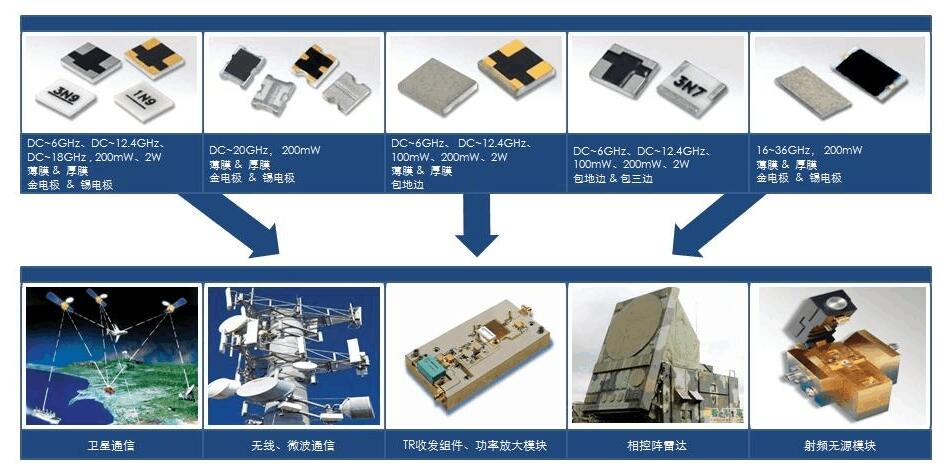The technology ofmicrowave high-frequency PCB production has been improved accordingly to meet the needs of different users,with the continuous development of science and technology. In recent years, the development of communication, automobile, and other fields are very rapid, the demand for printed boards has changed, high power printed boards, microwave high-frequency PCB demand increased. Many bosses of circuit board production enterprises are optimistic about this growth point, but how to do a good job of microwave high-frequency board, enterprises must practice good internal skills. I encountered in the production of their problems, shallow microwave high-frequency plate production should pay attention to matters.
The basic requirements of microwave high-frequency board
1. The substrate telecommunications engineer in the design, according to the actual impedance needs, has chosen the specified dielectric constant, dielectric thickness, copper foil thickness, therefore, when accepting orders, to check carefully, must meet the design requirements.
2. The production accuracy of the transmission line requires the transmission of high-frequency signals, and the characteristic impedance requirements of printed wire are very strict, that is, the production accuracy requirements of transmission lines are generally ±0.02mm (transmission line with ±0.01mm accuracy is also common). The edge of the transmission line should be very neat, and small burrs and gaps are not allowed to occur.
3. The characteristic impedance of the transmission line of high-frequency microwave board directly affects the transmission quality of microwave signals. And the size of the characteristic impedance and copper foil thickness has a certain relationship, especially for the hole metalized microwave plate, coating thickness not only affects the total copper foil thickness but also affects the accuracy of the conductor after etching, therefore, the size of the coating thickness and uniformity, to be strictly controlled.
4. Mechanical processing requirements, first of all, the high-frequency microwave board material and printed board epoxy glass cloth material in the machining is very different; Secondly, the processing accuracy of microwave high-frequency board is much higher than that of the printed board, and the general shape tolerance is ±0.1mm (high precision is generally ±0.05mm or 0~ 0.1mm).
5. The requirements of characteristic impedance have been talked about the content of characteristic impedance, it is the most basic requirement of a microwave high-frequency plate, can not meet the requirements of characteristic impedance, everything is futile.

Microwave high-frequency plate production should pay attention to the problems
1. Processing of engineering data: When processing the customer's documents by CAM, two aspects must be grasped. One is to thoroughly understand the production accuracy requirements of the transmission line; Second, according to the precision requirements and combined with the factory's process capacity, make appropriate process compensation.
2. Blanking: usually printed board blanking are used shearing machine or automatic machine, but for microwave medium materials can not be generalized, according to different media characteristics, and choose different blanking methods, mainly to milling, cutting, so as not to affect the flatness of the material and the quality of the PCB board.
3. Drilling: for different media materials, not only the parameters of drilling are different, but also the tip Angle of the bit, blade length, spiral Angle, and other special requirements, for aluminum, copper-based microwave medium materials, drilling processing is also different, to avoid the generation of burr.
4. Through the hole grounding: under normal circumstances, through t he hole using the method of chemical copper grounding, chemical precipitation copper usually use the chemical method or plasma method for processing, from the safety aspect, we use plasma method, the effect is very good; For the aluminum-based microwave dielectric materials, it is quite difficult to use the usual chemical precipitation copper, and it is generally recommended to use the metal conductive material for hole grounding, but the hole resistance is generally less than 20m.
5. Graphics transfer: this process is an important process to ensure the accuracy of graphics. In the selection of photoresist, wet film, dry film, and other photographic materials must meet the requirements of graphic accuracy; At the same time, the light source of the lithography or exposure machine must meet the needs of the process.
6. Etching: this procedure strictly controls the etching process parameters, such as the content of the components of the etching solution, etching solution temperature, etching speed, etc. Ensure that the edge of the wire is neat, without burr or notch, and the precision of the wire is within the tolerance requirements. To do a good job in this, we need to be careful, it is very necessary.
7. Coating and plating: The final coating on the conductor of a microwave high-frequency board is generally tin-lead alloy, tin-indium alloy, tin-strontium alloy, silver, gold, and so on. But electroplating pure gold is more common.
8. Forming: microwave high-frequency plate forming and printed board, mainly CNC milling. But the milling method is very different for different materials. The milling of metal-based microwave plates requires the use of neutral coolant for cooling, and the milling parameters vary considerably.
In short, in the production of microwave high-frequency PCB board, in addition, to pay attention to some of the above problems, but also must be careful of the temperature of the tin cylinder, the size of the wind pressure and turnover of the hot air, the indentation, and scratches in the process of clamping. Only carefully pay attention to each link, to make qualified products.